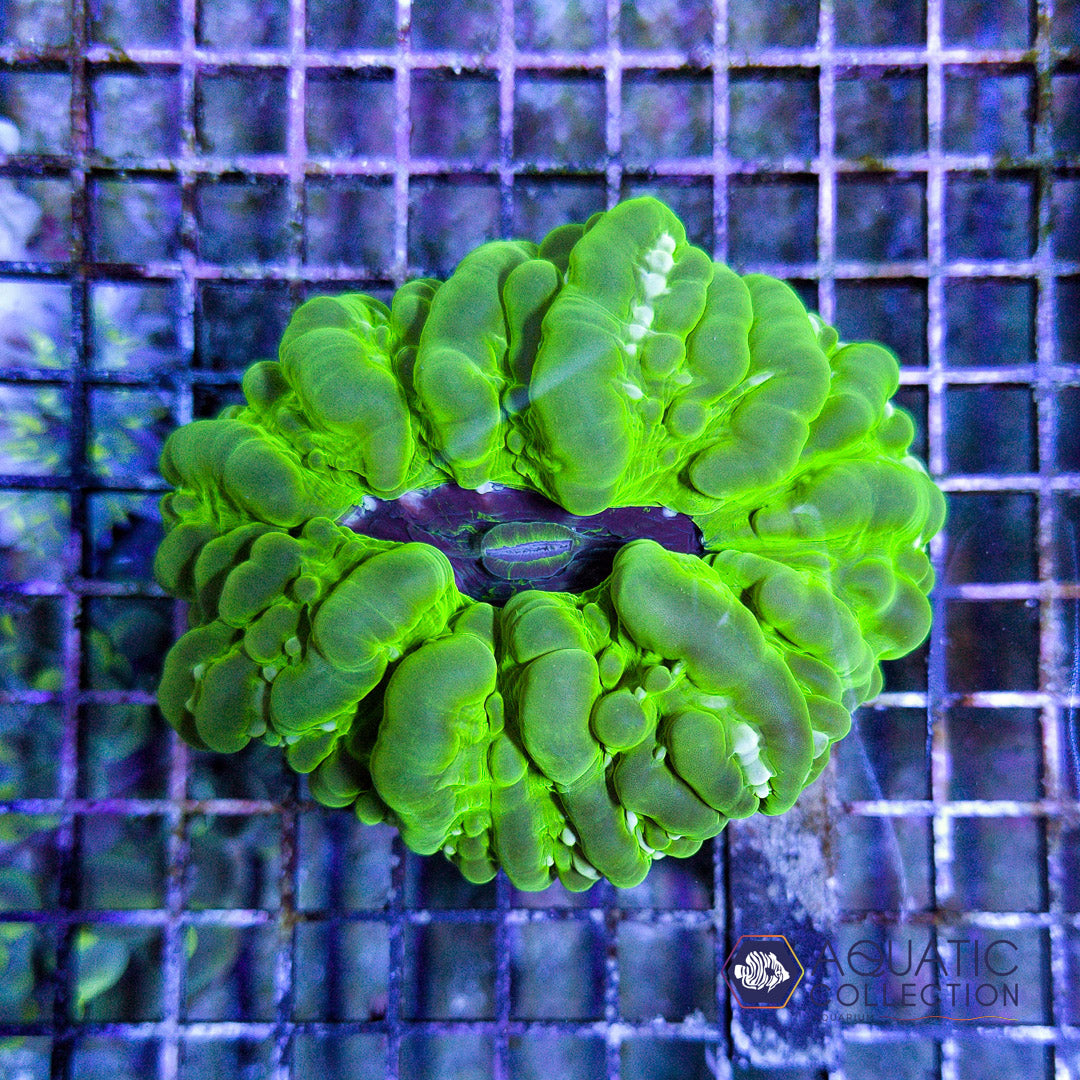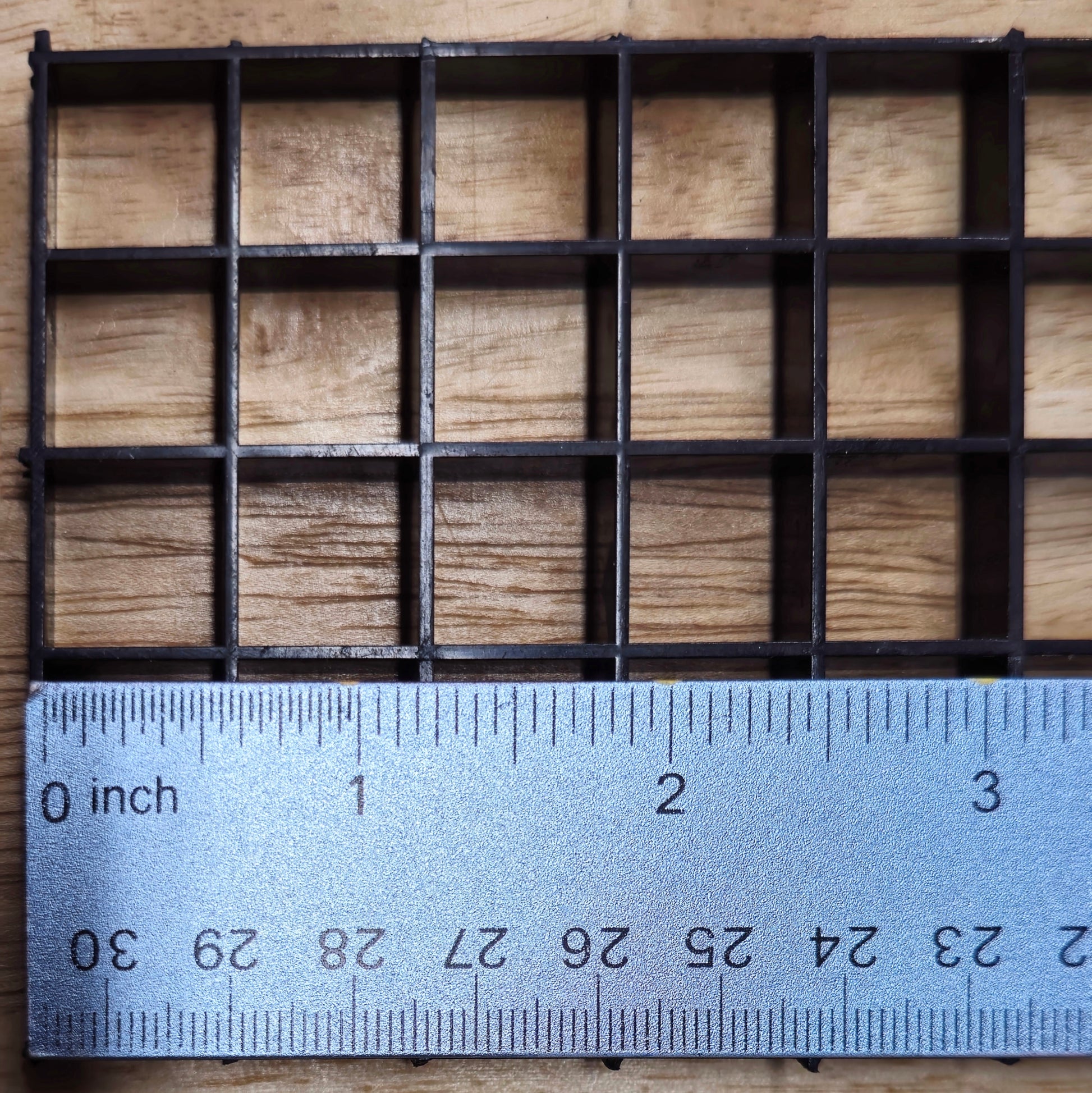Aquatic Collection Aquarium
Green Cynarina
Green Cynarina
Couldn't load pickup availability
Species: Cynarina
Approximate size: 4"
Colors: Green, purple
Overview
Cynarina, commonly known as "fleshy cup coral" or "meat coral," is a species of coral. It is known for its unique morphology and vibrant colors, making it a popular choice for both reef aquariums and natural marine habitats.
Morphology
- Structure: Cynarina typically exhibits a large, fleshy, and cup-like shape. The coral can be solitary or form small colonies, often appearing as a swollen, rounded mass. It has a distinctive, smooth surface that may show slight undulations.
- Corallites: The corallites are large and prominent, housing individual polyps. When expanded, the polyps can display long, flowing tentacles, particularly during the night when feeding occurs. The corallites are shallow and often arranged in a way that allows the coral to maintain its rounded appearance.
- Coloration: This species showcases a vibrant palette, including shades of green, brown, red, and purple. The bright colors are primarily due to the presence of symbiotic zooxanthellae, which perform photosynthesis and provide energy for the coral.
Habitat
- Distribution: Cynarina is typically found in shallow tropical waters throughout the Indo-Pacific region, including areas like the Great Barrier Reef and the Coral Triangle.
- Environment: It thrives in environments with moderate to bright light and prefers gentle to moderate water flow. These conditions help ensure good nutrient availability and prevent sediment buildup.
Biology
- Feeding: Cynarina is a mixotroph, relying on both its symbiotic zooxanthellae for energy and on capturing plankton and organic particles from the water. The coral polyps are most active at night, extending their tentacles to capture food.
- Reproduction: This coral can reproduce both sexually and asexually. Sexual reproduction often occurs through mass spawning events, where eggs and sperm are released into the water column. Asexual reproduction may occur through budding or fragmentation, allowing portions of the coral to develop into new colonies.
Care in Aquariums
- Light Requirements: Moderate lighting is ideal for Cynarina. While it requires sufficient light for photosynthesis, excessive direct light can lead to stress and potential bleaching.
- Water Flow: A gentle to moderate water flow is recommended, as it helps with nutrient distribution while preventing sediment from settling on the coral.
-
Water Parameters: Optimal conditions include:
- Temperature: 77-79°F
- Salinity: 1.025-1.026 specific gravity
- pH: 8.1-8.4 Regular monitoring of water quality is crucial for maintaining its health.
Behavior and Aggression
-
Aggressiveness: Cynarina can exhibit territorial behavior and have the ability to sting neighboring corals. It’s essential to provide adequate space around them to minimize aggression.
-
Compatibility: They can coexist with various tank mates, including other LPS corals, but should be monitored for interactions, especially with more aggressive species. Avoid placing them too close to corals that might harm them.
These corals are for saltwater aquariums only.
This is the exact specimen you will receive, however, due to differences in tank lighting and screen settings, this item may look slightly different in your aquarium.
For measurement reference use the picture with the black grid and the ruler.
For acclimation details see here.
Share




